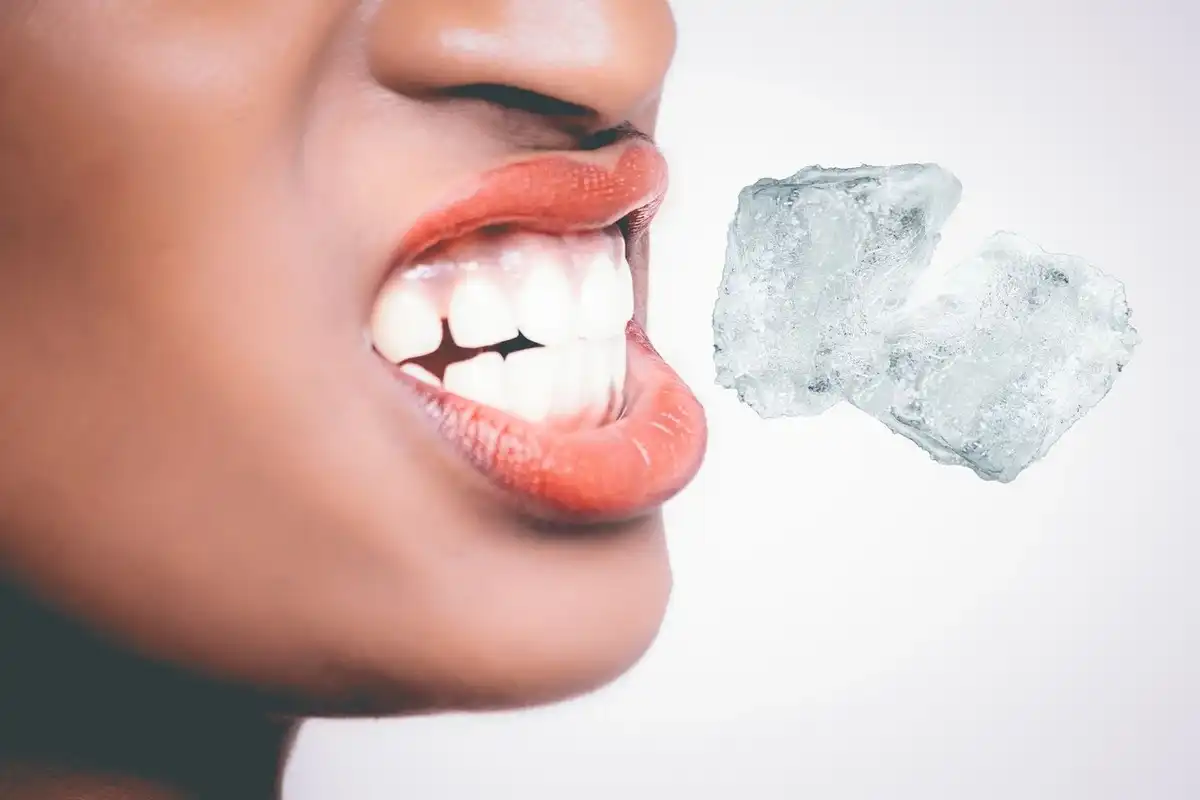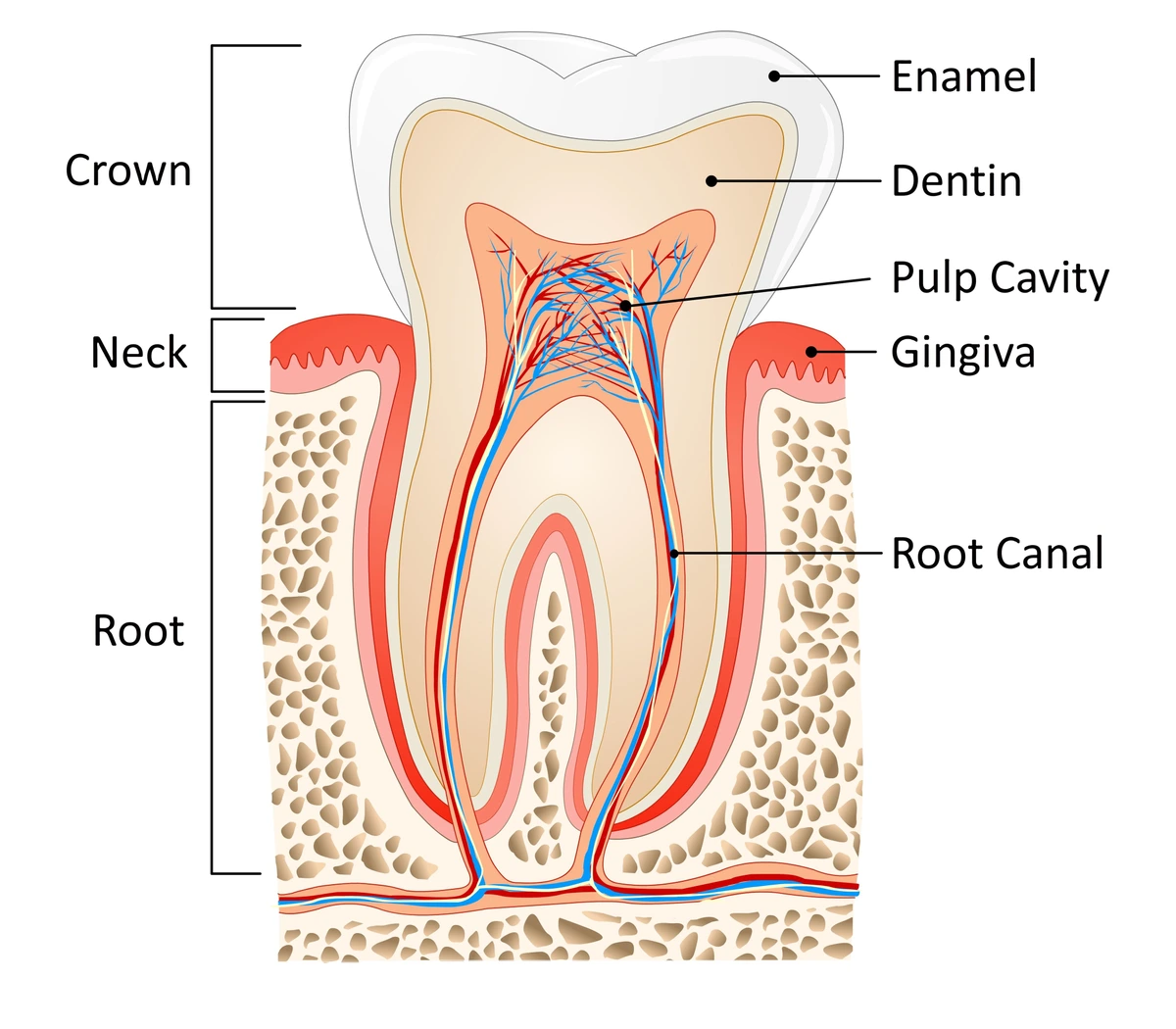Is Chewing Ice Bad For Your Teeth?


Let’s be honest with ourselves. Let’s be real here. Everyone has a habit. We’ve all picked a scab in our lifetime, or bitten our nails, or twirled our hair. Most habits are innocuous, and don’t do much harm - but others can be silently detrimental to our health, like the dentist-dreaded habit of ice chewing. Scared yet? You should be.
Why Do I Chew On Ice?
Chewing on ice, and other substances with no nutritional value, is known in the medical world as pica. For most, pica is just a habit. Those who munch on the rest of the ice left in their Starbucks cup just for fun probably don’t have much more to worry about than a simple habit.
However, if you crave ice every day, it may signify a bigger problem. In fact, doctors found a direct correlation between iron deficiency anemia and pica. So if you’re compulsively reaching for the ice tray, see a doctor to check out why this is happening.
Although ice chewing may seem like a harmless pastime, it can do some real damage - especially to the teeth and enamel. As you crunch down on ice, the combination of the coldness and hardness of the substance makes for a perfect storm of tooth destruction.
The extreme cold stiffens the tooth, while the hardness supplies blunt force that cracks the already rigid tooth enamel. Just like that, tiny fractures occur in the enamel of the tooth.

What Is Tooth Enamel
Tooth enamel is the outermost layer of tissue that is found on all human teeth. This forcefield is the hardest substance in the human body - it’s even tougher than bone. Meant to protect our teeth from decay, enamel adds a durable barrier to the teeth.
Although strong, enamel is not invincible. And once enamel is lost, the body does not create more to replace it. Tooth enamel, unlike the rest of the body, is not made up of living cells. This means the body cannot replenish it once it is damaged.
This is why you need to protect your tooth enamel at all cost and stop chewing on ice!
Crack Or Chip Teeth
The small fractures that occur in teeth from ice chewing may not be conspicuous at first. But, these little cracks will start to deepen over time. The more ice you chew, the bigger these cracks grow.
What starts out as a microscopic fracture can quickly turn into a broken tooth if an ice-chewing habit persists. Enamel starts to break, leaving the tooth vulnerable to tooth decay. What’s worse, enamel keeps your teeth from feeling extreme temperatures like hot and cold. That means that ice chewing will make your teeth feel more and more sensitive over time.
How Do I Stop Chewing Ice?
The number one way to quit chewing on ice is to refrain from tempting yourself. I know, I know, it’s easy to say but difficult to do. Try steering clear of beverages with those scrumptious-looking ice chips in them, and instead ask for no ice at the counter when ordering a chilled drink.
Additionally, to kick the habit, use a straw (a reusable one, save the turtles!) to avoid the temptation of crunching ice straight from the cup.
If you feel this is more than just a habit, and you’ve been eating ice consistently for over a month, talk to your doctor. Ice chewing won’t go away on it’s own with lifestyle changes if you have a medical condition that is causing your pica. The underlying condition must first be treated.
Should I Never Have Ice Again?
No! Just be aware! Ice chewing is a lot scarier than it might seem. Many adults chew ice daily, wreaking havoc on tooth enamel and causing little cracks that will cause big problems down the road. If you’re trying to quit chewing ice, don’t get discouraged!
You aren’t alone in this. Plus, once you quit the habit, your older self will surely thank you for preserving every bit of enamel you’ve got.

Make your inbox smile!
Subscribe





